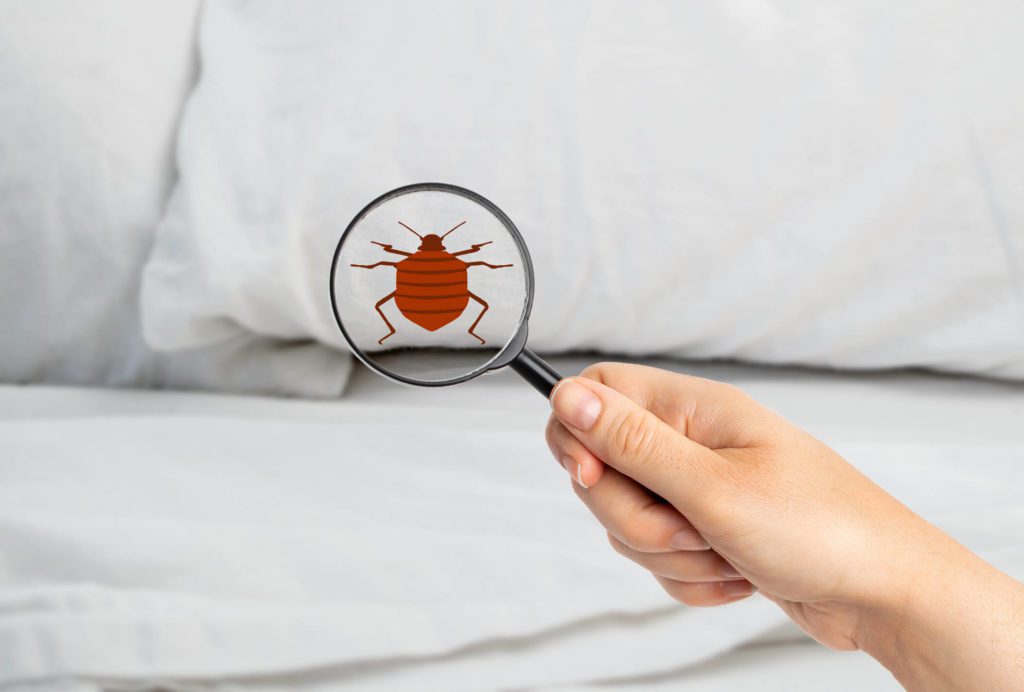Sorts Of Parasite Control: Which Method Is Right for Your Infestation?
When encountered with a parasite invasion, the option of a suitable approach for pest control is vital in efficiently managing the circumstance. By exploring the numerous types of pest control methods offered, people can make informed decisions customized to their unique circumstances, making sure a more lasting and efficient outcome in parasite eradication.
Chemical Insect Control
Chemical pest control involves using artificial or naturally acquired chemicals to manage and eradicate pest populations efficiently. This technique is generally utilized in farming, forestry, and property setups to fight a wide variety of bugs, consisting of rodents, pests, and weeds. Making use of chemical pesticides can supply quick and targeted services to pest invasions, making it a preferred choice for many individuals and organizations.
One of the key benefits of chemical insect control is its capability to promptly get rid of pests, reducing the danger of damages to crops, residential or commercial property, and human health. By utilizing details chemicals that target particular parasites, this approach can efficiently regulate problems while reducing injury to advantageous organisms and the setting when used appropriately.
Nevertheless, the usage of chemical pest control additionally elevates worries concerning potential negative effects on non-target types, water sources, and human health. It is crucial to follow safety and security standards, use chemicals sensibly, and take into consideration alternate bug control methods to decrease these threats and ensure sustainable pest administration practices.
Biological Bug Control
Biological insect control, likewise understood as biocontrol, uses living microorganisms to handle and reduce insect populaces naturally. By using the insect's natural predators or microorganisms, biological parasite control supplies a lasting and environmentally pleasant option to pest management.

Mechanical Bug Control
Making use of hand-operated and physical approaches to take care of bug populations, mechanical parasite control offers an alternative method that does not rely upon using living organisms or artificial chemicals. This approach includes using barriers, traps, or various other tools to physically discourage or eliminate pests. By obstructing parasite entrance points or setting up traps to catch them, mechanical parasite control can properly minimize invasions without introducing chemicals into the environment.
One usual instance of mechanical insect control is the use of mesh displays on doors and windows to stop bugs from getting in structures. This easy yet effective approach serves as a physical barrier, keeping parasites out while enabling proper air flow. Furthermore, tools like mousetraps, fly swatters, and ultrasonic repellents drop under the mechanical insect control group.
While mechanical bug control methods can be labor-intensive and call for regular tracking and upkeep, they use a eco friendly and sustainable remedy for handling parasite invasions. By incorporating different mechanical strategies, residential or commercial property owners can create an extensive pest control method that reduces reliance on chemical pesticides.
Physical Pest Control

Some typical physical insect control approaches consist of the usage of obstacles such as nets or screens to protect against bug entrance, traps to record and get rid of bugs, and hand-picking to literally get rid of bugs from plants or frameworks. In addition, methods like warm treatments can be made use of to regulate parasites like bed bugs by elevating the temperature level to levels that are lethal to the pests.
Physical bug control is specifically beneficial in incorporated insect management (IPM) strategies, where numerous insect control approaches are integrated for effective parasite administration while minimizing making use of chemicals. By using physical bug control techniques, people can successfully address parasite invasions with marginal environmental description effect.
Integrated Pest Monitoring
When executing physical parasite control techniques as component of bug administration approaches, Integrated Pest Administration (IPM) arises as a comprehensive method that leverages various strategies to effectively control pest populaces. IPM concentrates on lasting prevention of bugs via a mix of biological, social, physical, and chemical tools customized to specific bug concerns. By incorporating multiple control strategies, IPM intends to minimize the dangers linked with pests while also decreasing dependence on chemical remedies.
One key element of IPM is the focus on surveillance and evaluating pest populations to determine the most proper control approaches. This proactive method permits very early intervention and targeted techniques, bring about a lot more effective parasite management. Furthermore, IPM advertises ecologically pleasant practices by prioritizing non-chemical control methods and only using pesticides as a last hotel.
Final Thought

By utilizing the parasite's all-natural killers or virus, organic bug control provides a sustainable and environmentally pleasant solution to pest management. - Kings pest control Cincinnati
Utilizing hands-on and physical methods to handle pest populaces, mechanical parasite control supplies a different method that does not depend on the usage of living microorganisms or artificial chemicals.An efficient strategy to taking care of bug populaces without relying on chemical or organic approaches entails the use of physical insect control methods.When executing physical insect control methods as component of insect monitoring strategies, Integrated Parasite Management (IPM) emerges as an extensive method that leverages numerous strategies to properly manage pest populations. Chemical parasite control involves the use of pesticides, biological pest control utilizes all-natural predators, mechanical bug control involves physical barriers, physical insect control includes trapping or getting rid of bugs, and integrated bug management integrates numerous methods for an alternative technique to pest control.